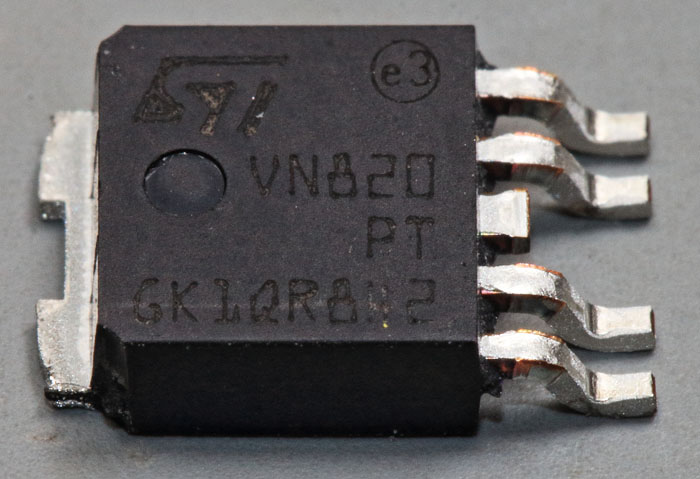
The STMicroelectronics VN820 is a Highside Smart-MOSFET of the third generation "M0-3".
The VN02H (
https://www.richis-lab.de/FET02.htm) is of the first generation "M0-1".
The VN820 gives you 9A at 40m

. Maximum isolation voltage is 55V (Clamping).
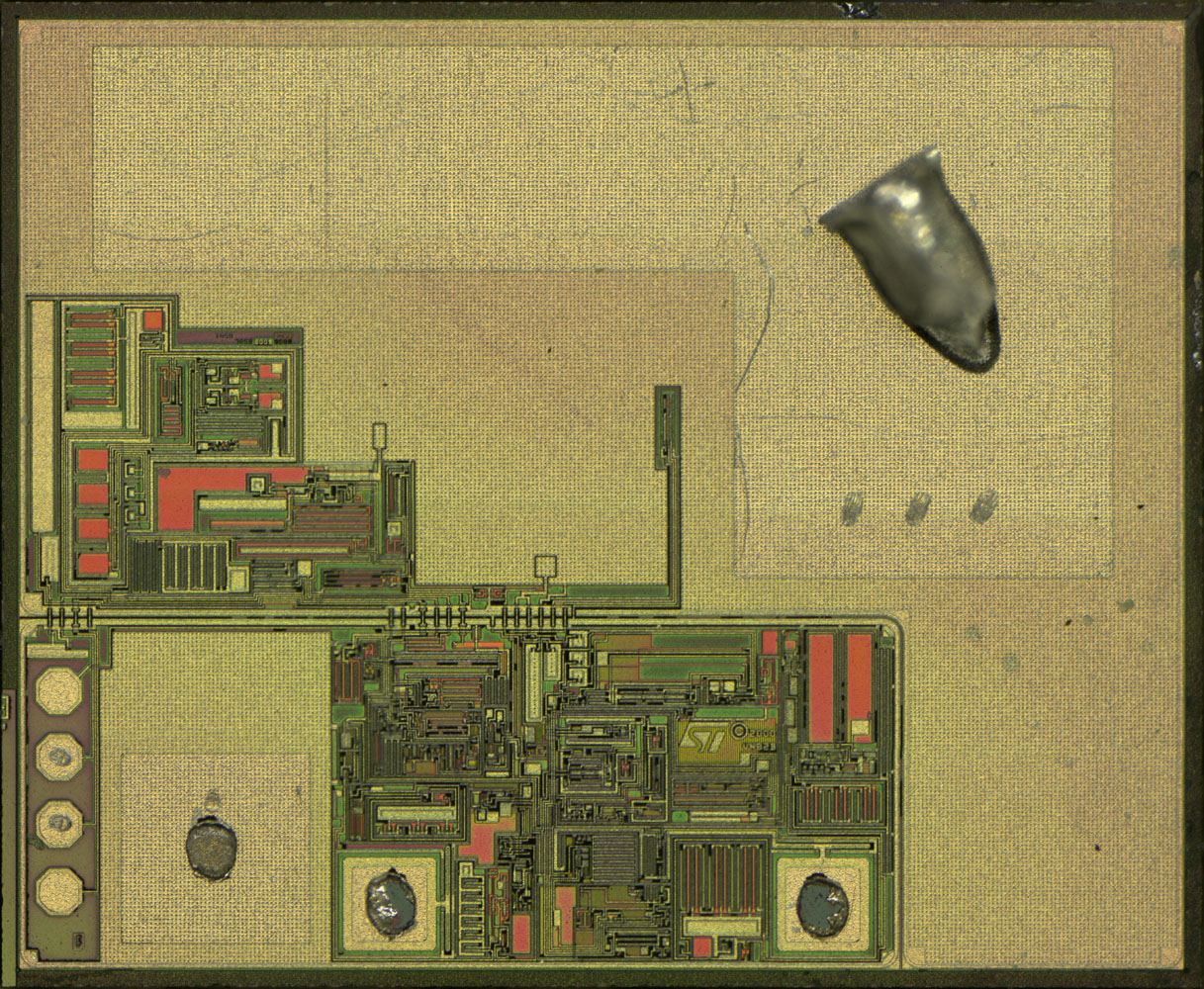
The die is 3,2mm x 2,6mm.
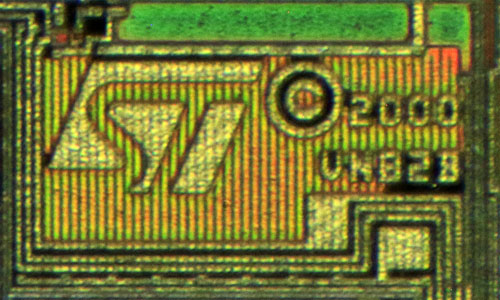
The design is named VN82B and was created in the year 2000.
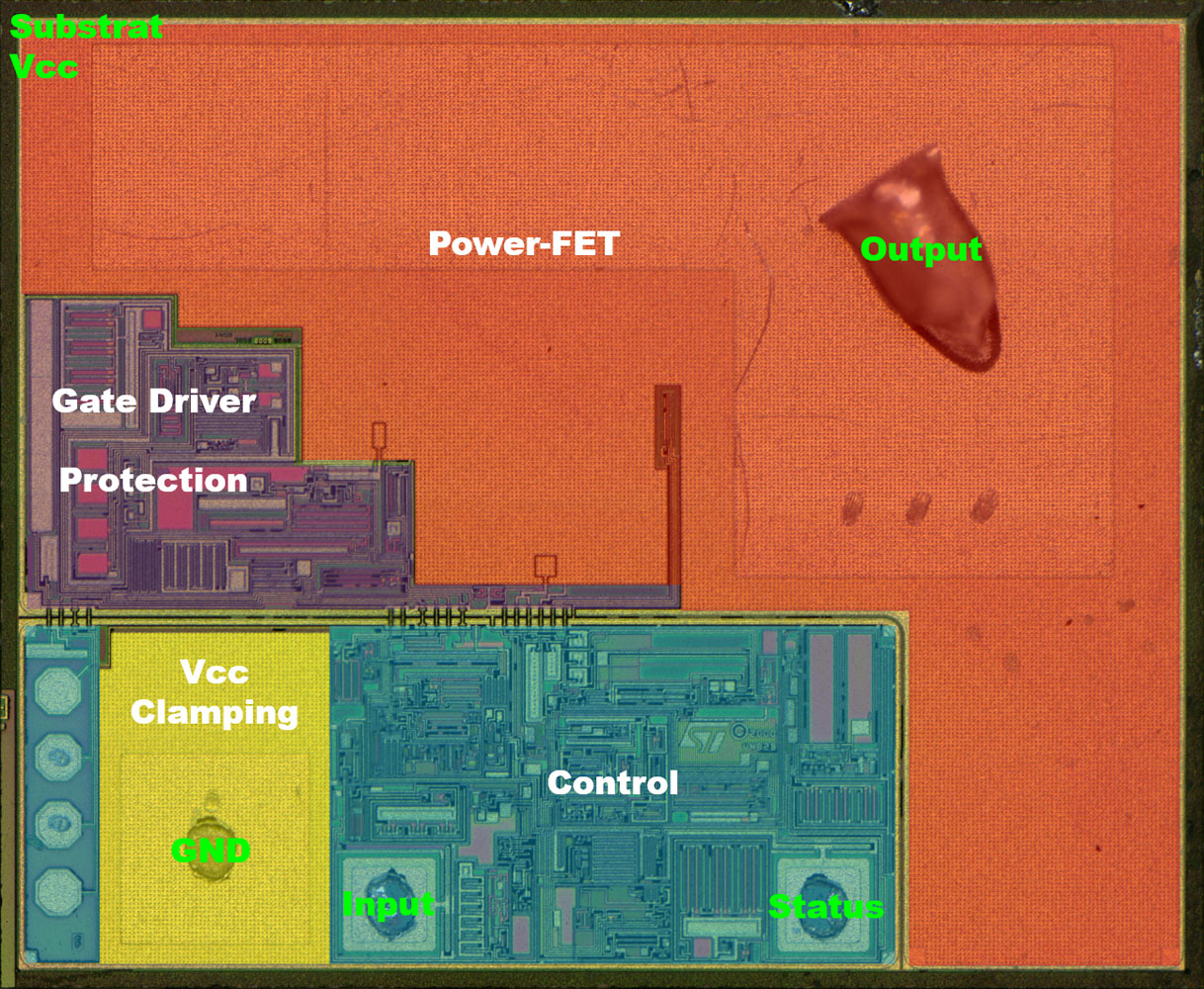
The die is divided in two pieces.
The power transistor (red) is integrated in the same frame as the driver circuit (purple). They share the source potential as reference.
The second frame shares the GND potential as reference. In this frame there is the control circuit and the Vcc clamp which protects the devices against overvoltages on the supply line.
The main power transistor connects Vcc (substrate) to Output. The Vcc-Clamp connects Vcc (substrate) to GND.
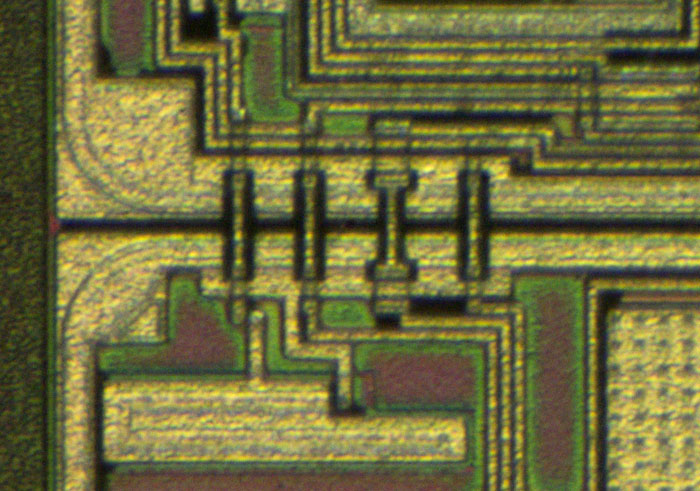
An interesting connection between the two areas.
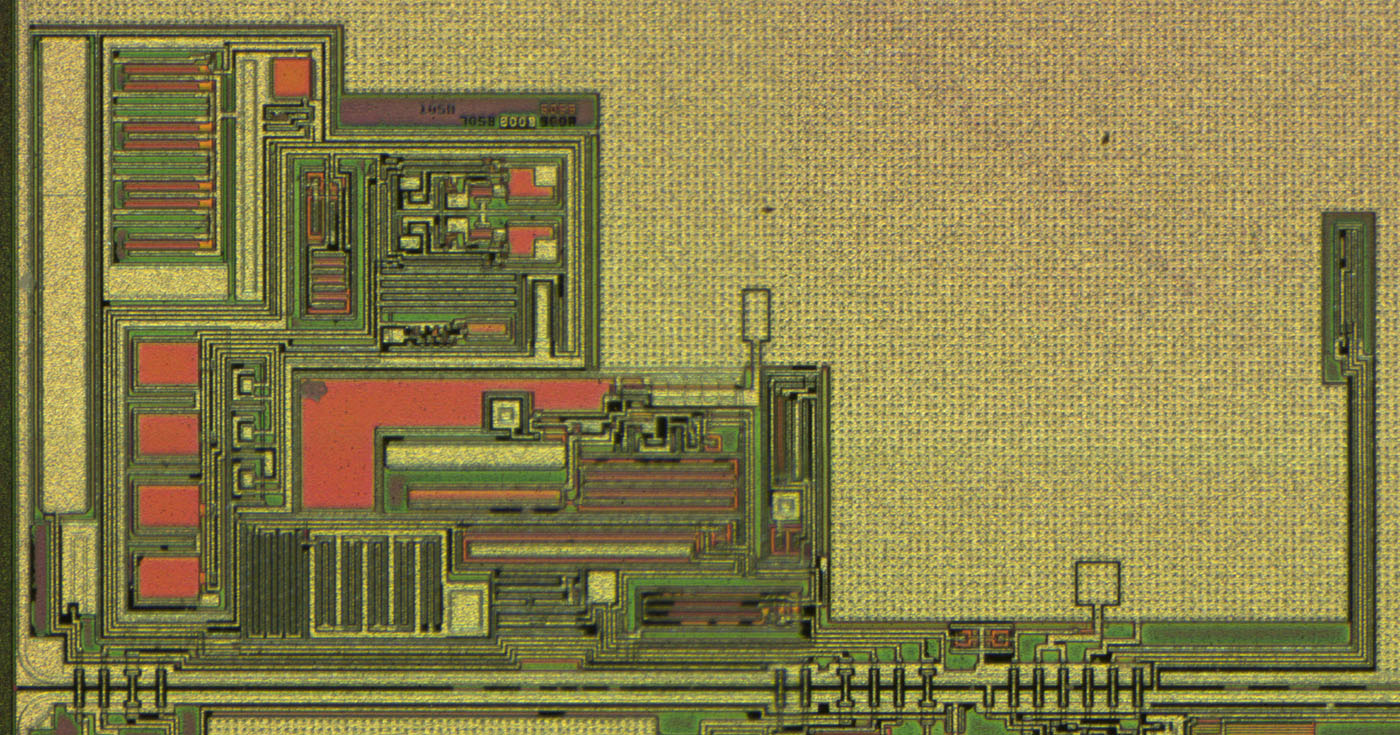
In the driver area there are some capacitors some probably storing the energy to charge the gate of the output transistor.
It seems like there are also some protection circuits in this area to keep reaction time short.
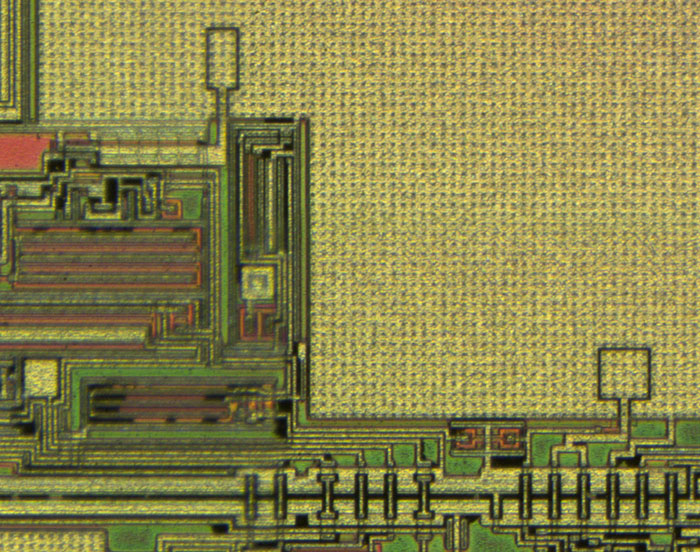
There are two small current sensing transistors. One transistor is connected to the driver circuits, one transistor is connected to the control circuit. The control circuit needs the current value for open load detection. The VN920 gives you a current sense output. Perhaps they use the same die.
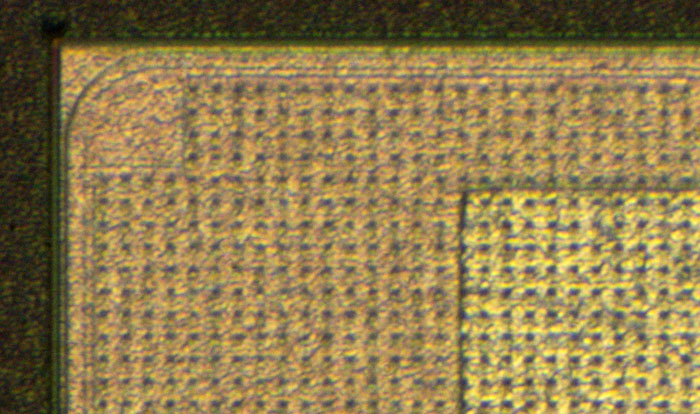
Well the power transistor is a big MOSFET.

In the corners there are free squares. That looks like electrical field steering but I don´t think that is what these structures are for.
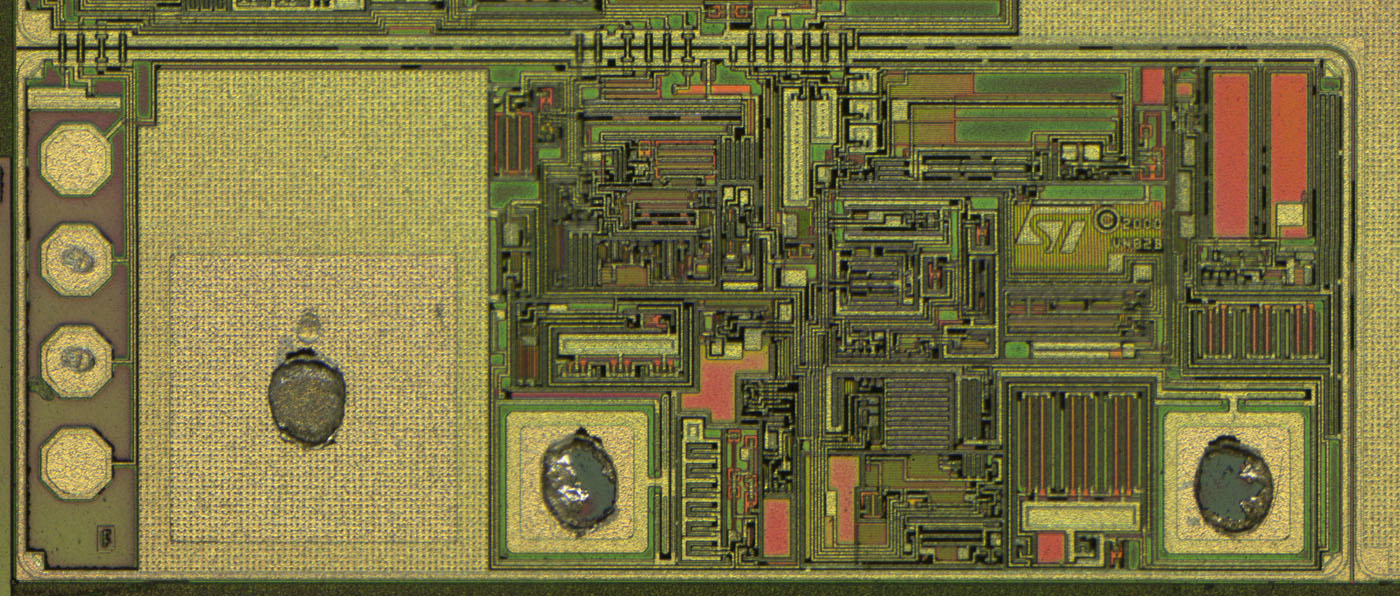
The control circuit and the Vcc clamp.
Some more pictures here:
https://www.richis-lab.de/FET13.htm